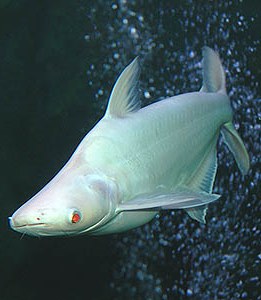Pangasius - September 2014

During the first quarter of 2014, nearly 130 000 tonnes of frozen pangasius fillets were imported by more than 70 countries worldwide.
The USA absorbed about 25% of this total. Though demand is slowing in the major markets of the USA and Europe, demand remains firm in Asia and has been mostly met by local production. Growing imports were observed in Latin America, particularly in Brazil, Colombia and Peru.
Viet Nam
The Vietnam Association of Seafood Exporters and Producers (VASEP) reports that domestic pangasius production reached 1.35 million tonnes in 2013, making up 45% of the national farmed fish production. According to VASEP, pangasius farming has been negatively impacted by high feed cost, decreased product price and lower import volumes from major markets, resulting in a 6.1% decrease in the Mekong Delta farming area from January to June.
Pangasius exports reached USD 388.5 million in the first quarter of 2014, representing an increase of 5.2% year on year. According to VASEP, pangasius products were sent to 126 countries, compared with 123 markets in 2013. VASEP also reports that an increase in sales was observed in value-added products, which obtained a 54.9% rise (USD 3.55 million) in the first quarter this year. In the tra fish sector, exports were mainly frozen fillets, valued at USD 405 million, representing a 4.9% rise year on year. The USA was the leading importer, followed by the EU.
Viet Nam currently has 45 pangasius farms certified with the Aquaculture Stewardship Council (ASC) standard, with suppliers hoping that this certification will help to recover the declining EU market. According to the ASC European Manager for Commercial Marketing, the number of ASC certified pangasius products in Germany has grown from about 60 to 100 within the past 12 months, demonstrating a positive appreciation for ASC certified pangasius in this market.
USA
During the first quarter of 2014, frozen catfish imports reached 32 565 tonnes; 8% more than compared with the first quarter of 2013. Frozen pangasius fillets, mostly supplied by Viet Nam, made up 91% of this volume at 29 500 tonnes. The recent announcement of anti-dumping duties on Vietnamese pangasius and the signed Farm Bill on the catfish inspection programme may reduce imports into this major market.
Imports of frozen Ictalurus fillets from China increased by 109%.
EU
During the first quarter of 2014, the EU countries imported close to 32 000 tonnes of pangasius fillets, a decrease of 6% compared with the same time period in 2013. According to the Eurostat report, Viet Nam was the leading supplier. In terms of markets, Spain and the Netherlands were the largest importers within the EU, though these imports did decline indicating a general waning demand. Likewise during the first quarter, Germany imported 3 725 tonnes of frozen pangasius fillets, 25% less that compared with the same period in 2013. Imports were higher into Italy, the UK and Belgium.
Indonesia
The catfish industry, particularly pangasius, is booming in Indonesia thanks to strong governmental support and growing domestic demand. Local pangasius production is estimated to be around 500 000–600 000 tonnes per year, with Pangasius hypothalamus being the main species cultured. According to the Indonesian Catfish Entrepreneurs Association (APCI), the country’s pangasius industry now takes a 70% share of the local fillet market. In addition to strong support from the Ministry of Marine Affairs and Fisheries (MMAF), the government’s decision in 2011 to enforce stricter import controls for seafood products has contributed to the rapid growth of pangasius production and processing. Ex-farm price is currently around IDR 14 000 per kg (USD 1.20) while frozen fillets are sold around IDR 60 000–70 000 per kg (USD 5.10–5.95) at retail outlets. The MMAF said that some foreign buyers have expressed interest in buying pangsius fillets from Indonesia as an alternative to Viet Nam.
Emerging markets
Brazil appears as an important emerging market for pangasius. Imports of frozen pangasius fillets into the country reached 22 858 tonnes in 2013 and during the first quarter of 2014, were 102% more than compared with the same period last year.
In the Russian Federation, frozen pangasius and tilapia fillets made up 35% of the country’s total imports of frozen fish fillets in 2013. Frozen pangasius fillets amounted to 21 829 tonnes, mostly coming from Viet Nam. During the first quarter of 2014, close to 6 000 tonnes were imported, up from 9% compared with the same period in 2013.
In Japan, the weak yen took a toll on Japanese imports of fish fillets and fish meat. However, imports of panga fillets, the cheapest among the freshwater fillet category, increased significantly within a year. Meanwhile, the AEON retail chain and the WWF Japan have launched ASC certified pangasius in AEON stores throughout Japan. According to Chris Ninnes, ASC’s CEO, there are already more than 60 approved Japanese products with the ASC logo, and 4 four of these can be found in stores across the country.
Outlook
With the decrease in pangasius farming areas in Viet Nam, global production growth will most likely increase from other producing countries in Asia. At the same time, supplies from these countries will be channelled more to the domestic markets in these producing countries as well as other growing niche markets. It will be interesting to see how ASC certified pangasius affects imports into the EU and other markets.

